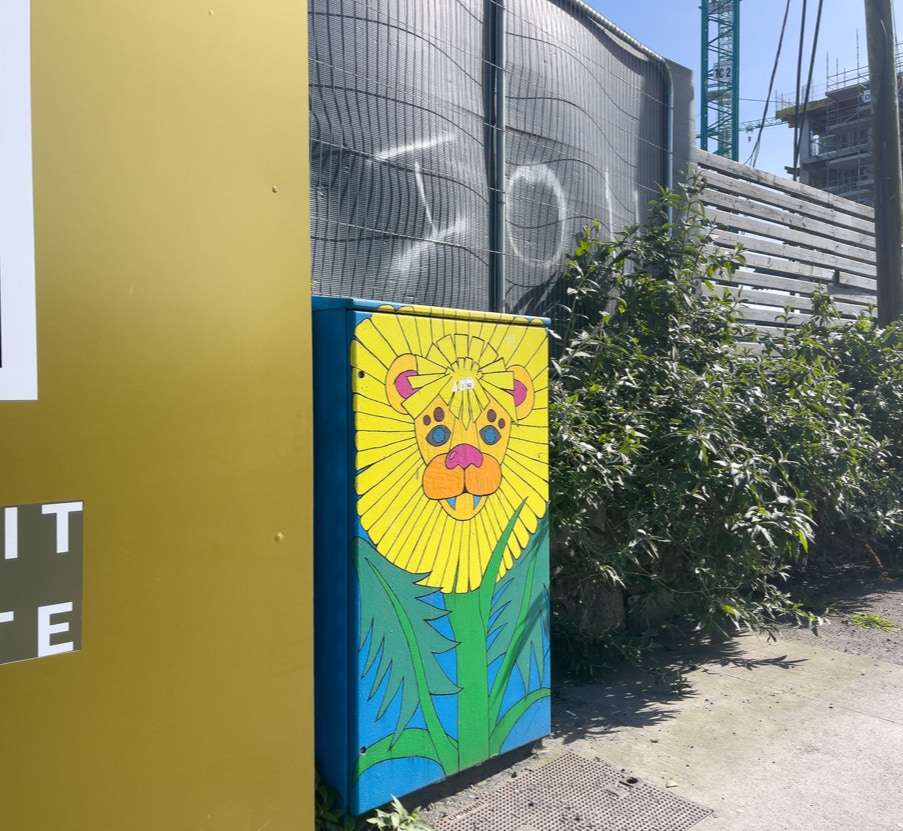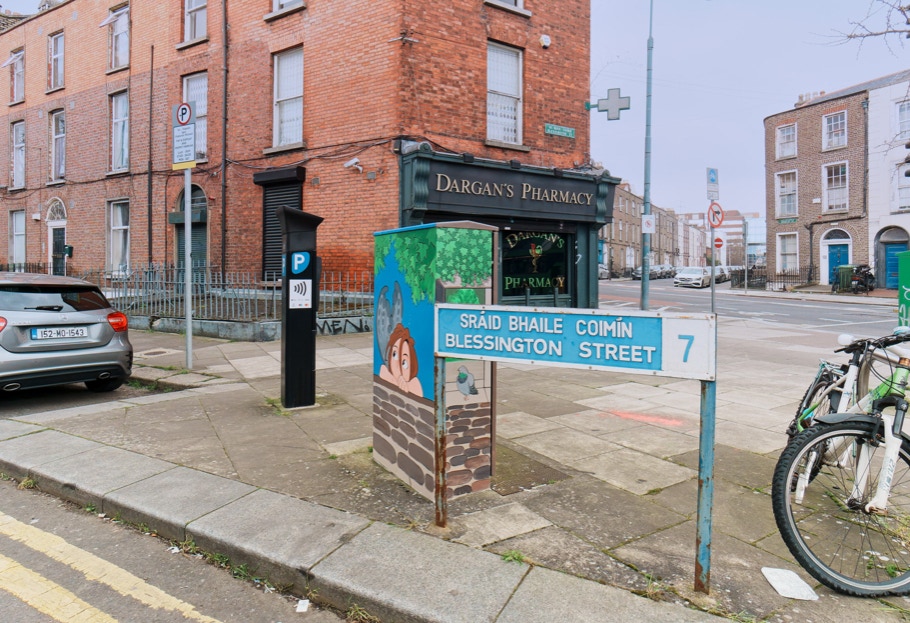01/05/2024
DANDELION IS AN EXAMPLE OF PAINT-A-BOX STREET ART AND IT IS BY LORCAN CASSIDY [EAST ROAD]
Lorcan Cassidy is an artist who participated in the Dublin Canvas project, an inclusive public art project open to anyone over the age of 18. He created a piece of street art titled “Dandelion” located at East Road, Church Road, Eastwall, Dublin 3. The artwork was completed in 2022 as part of the Dublin City Council initiative.
Lorcan Cassidy’s artwork “Dandelion” is described as a hybrid, mashing one or more elements together to form a new entity. This aligns with the Dublin Canvas project’s aim to encourage creativity and innovation, and to draw inspiration from the surroundings of each box when designing the artwork.
It’s wonderful to see such creative public art projects like Dublin Canvas that not only beautify the city but also provide a platform for artists to showcase their talent. If you’re in the area, it might be worth taking a stroll to see this artwork in person!
When I was young we, as children, referred to dandelions as "wet the beds" and I have always intended to check if this was common elsewhere so after seeing this artwork featuring the flower in question I decided to check and here is what I discovered:
Referring to dandelions as “wet the beds” or similar names is indeed common in other parts of the English-speaking world. This is due to the diuretic properties of dandelions, which can increase the need to urinate.
In English-speaking Canada, particularly in Newfoundland, dandelions are known as “pissabed”. The French also have a similar name for this plant, ‘pis-en-lit’, which translates to ‘piss in bed’.
These names all reflect the same folk belief that playing with dandelions could cause bed-wetting. It’s interesting to see how different cultures have observed the same properties of the dandelion and incorporated them into their language in a similar way. However, it’s important to note that these names are based on folklore and there’s no scientific evidence to suggest that simply touching or playing with dandelions can cause bed-wetting. The diuretic effects are generally associated with consuming parts of the plant.
Dandelions are generally safe to eat and all parts of the plant, including the roots, leaves, and flowers, are edible. They are highly nutritious plants loaded with vitamins, minerals, and fibre.
Dandelion greens can be eaten cooked or raw and are an excellent source of vitamins A, C, and K. They also contain vitamin E, folate, and small amounts of other B vitamins. Dandelion greens provide several minerals, including iron, calcium, magnesium, and potassium. Dandelion root is rich in the carbohydrate inulin, a type of soluble fibre found in plants that supports the growth and maintenance of healthy gut bacteria in your digestive tract.
Dandelions contain potent antioxidants, which may explain many of its medicinal properties. Antioxidants are compounds that help neutralise free radicals — molecules that are a product of normal metabolism but contribute to chronic disease risk if levels get too high in your body. Therefore, antioxidants are crucial for your overall health.
Dandelions contain high levels of the antioxidant beta-carotene, which may protect against cell damage and oxidative stress. They’re also rich in another type of antioxidants called polyphenols.
However, it’s important to note that while dandelions are safe to eat in moderation, eating dandelions regularly or taking supplements that contain dandelion may cause health problems for people with diabetes or people who take certain medications, such as blood thinners, lithium or diuretics.
Some people may also have allergic reactions to dandelions. If you plan to pick wild dandelions, it’s important to be aware of your surroundings. You need to be concerned about compounds like heavy metals in the ground or things that might have been deposited on the leaves from the air, which could be everything from pesticides to your pets that have gone outside and done their thing.
So, while dandelions are generally safe to eat, it’s always a good idea to consult with a healthcare provider or a knowledgeable forager before adding new wild foods to your diet, especially if you have any health conditions or are taking medication.



![PAINT-A-BOX STREET ART BY ACIDSTARZART FROM BELFAST [TWO EXAMPLES IN CHAPELIZOD] 001](images/0/paint-a-box-street-art-by-acidstarzart-from-belfast-two-examples-in-chapelizod-231074-899.jpg)
![PAINT-A-BOX STREET ART BY ACIDSTARZART FROM BELFAST [TWO EXAMPLES IN CHAPELIZOD] 002](images/h/paint-a-box-street-art-by-acidstarzart-from-belfast-two-examples-in-chapelizod-231075-899.jpg)
![PAINT-A-BOX STREET ART BY ACIDSTARZART FROM BELFAST [TWO EXAMPLES IN CHAPELIZOD] 003](images/p/paint-a-box-street-art-by-acidstarzart-from-belfast-two-examples-in-chapelizod-231076-899.jpg)
![PAINT-A-BOX STREET ART BY ACIDSTARZART FROM BELFAST [TWO EXAMPLES IN CHAPELIZOD] 004](images/t/paint-a-box-street-art-by-acidstarzart-from-belfast-two-examples-in-chapelizod-231077-899.jpg)




![HAVE YOU BEEN A BOLD BOY [PAINT-A-BOX STREET ON NORTH BRUNSWICK STREET] 001](images/n/have-you-been-a-bold-boy-paint-a-box-street-on-north-brunswick-street-228359-1-902.jpg)
![HAVE YOU BEEN A BOLD BOY [PAINT-A-BOX STREET ON NORTH BRUNSWICK STREET] 002](images/6/have-you-been-a-bold-boy-paint-a-box-street-on-north-brunswick-street-228361-1-902.jpg)
![HAVE YOU BEEN A BOLD BOY [PAINT-A-BOX STREET ON NORTH BRUNSWICK STREET] 003](images/4/have-you-been-a-bold-boy-paint-a-box-street-on-north-brunswick-street-228360-1-902.jpg)

